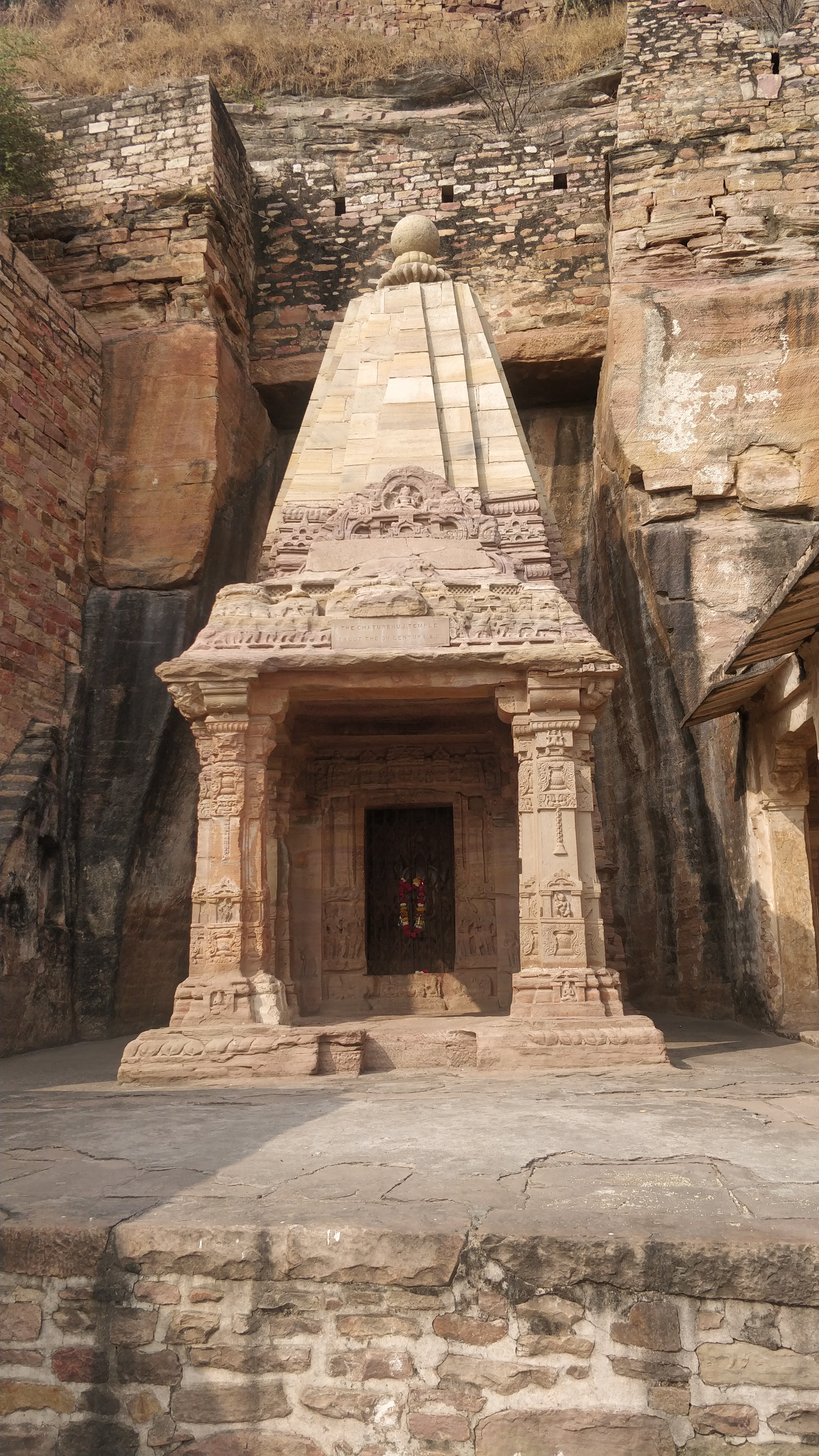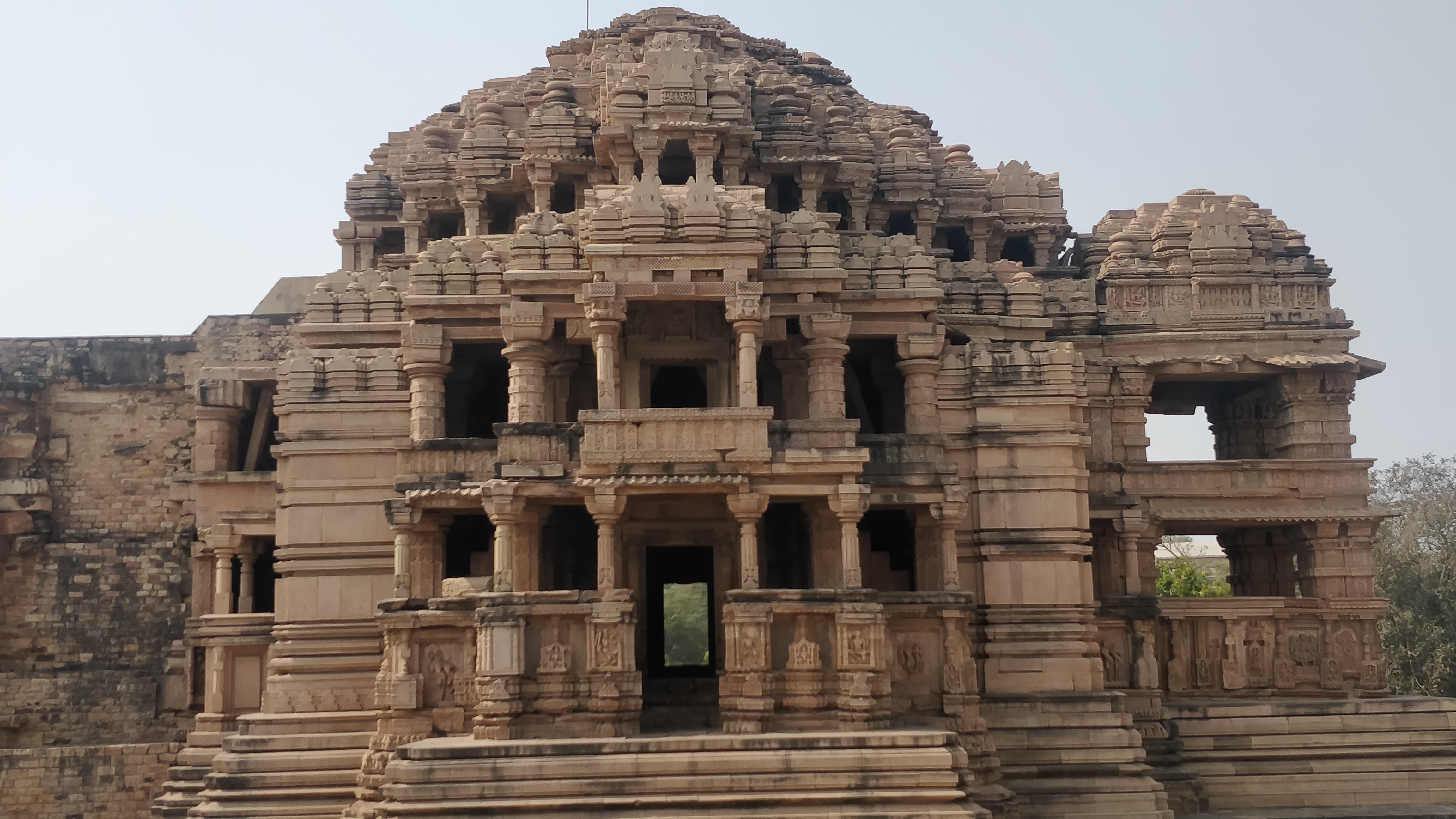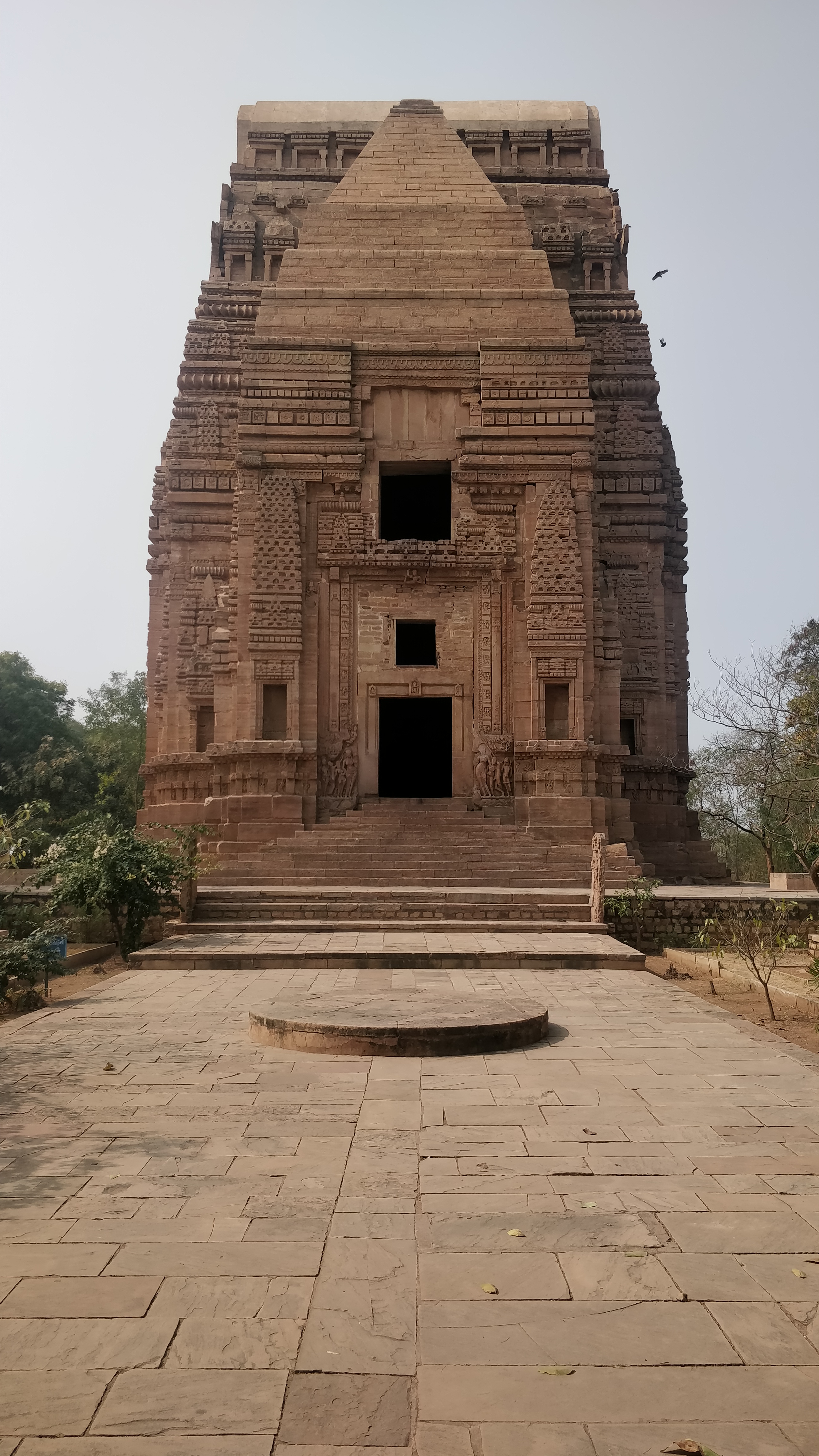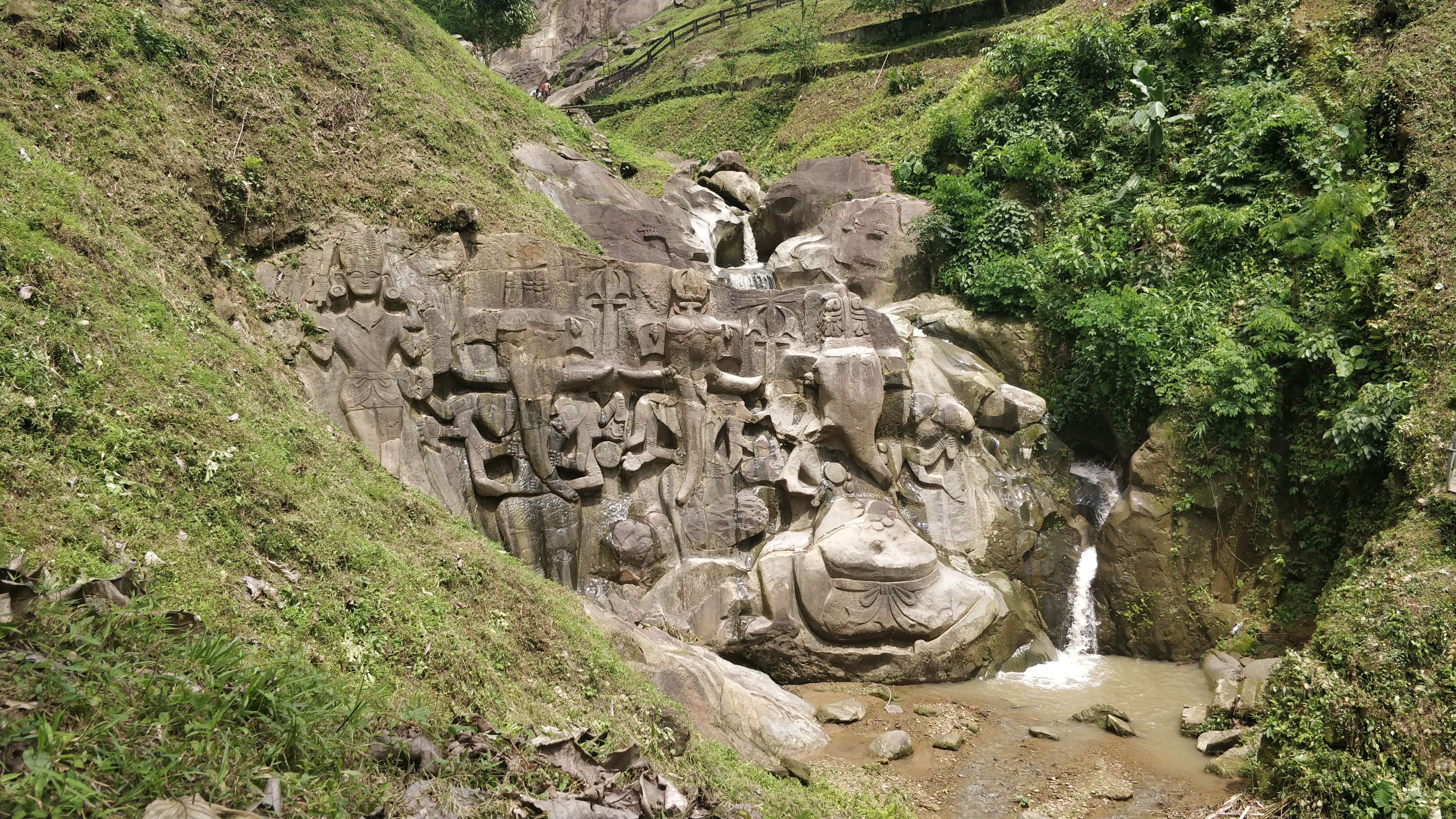
Gwalior Fort, Madhya Pradesh
Built by a local king, Suraj Sen. A saint named Gwalipa came to the fort to meet the king. The king was suffering from leprocy. Gwalipa cured his disease by offering some water from nearby sacred pond, named Suraj Kund, which is in Fort complex. He immediately became healthy again. So king named the city and fort on saint's name as a thankful gesture.

Chaturbhuj Temple, Gwalior, Madhya Pradesh
Dedicated to lord Vishnu. This temple is excavated from the solid rock of the fort and is known as Chaturbhuj Temple. The plan of the temple consists of a square shrine with a spire on it and a portico in front resting on pillars, the upper portion of the spire was damaged which is now restored with plain blocks and stone. There are ample examples of beautiful sculptural art on the exterior of its jangha wall. These sculptures include mainly the figures of dancing Ganesha, Kartikeya, Parvati in panchagni-tapa, Navagrihas, Vishnu, Trivikram, Astadikpalas etc. The upper interior part of the portico is carved with various scenes of Krishnalila. The inscription in the sanctum of the temple contains the figure of zero (0) in numerical form, used probably for the first time in Gwalior region. The temple was carved out during the reign of Pratihara king Bhojdeva in 876 A.D.

Sas-Bahu Temple, Gwalior, Madhya Pradesh
The group of two temples standing on the eastern corner of the Gwalior fort is popularly known as Sas-Bahu Temple. The literal meaning denotes mother-in-law and Daughter-in-law, generally applied for the bigger and smaller temples respectively. The original name of the temple was derived probably from "Sahastrabahu", meaning thousand arms. In due course of time, it came to be known as "Sas-Bahu". The Architectural Grandeur Glorifies the temple building tradition of the Kachchhapaghata Rulers. The construction of the temples was started by king Ratanapala and completed during the reign of Mahipala in 1093 A.D. The fully developed temple plan is aligned in north-south direction, having garbha-griha, antarala, mahamandapa and ardhamandapa from south to north. The exuberantly carved pillars and ceiling of the central hall are flanked by porches on three sides. The exterior walls are richly carved with floral, geometric designs, elephants figures, dancers, musicians and scenes from Krishna Lila. The exterior decoration of the smaller temple is also similar. It possesses a vestibule and a small central hall. The stone inscription fixed on the portico of the bigger temple refers about its construction, religious congregation, folk rituals and revenue alloted for the temple.

Teli ka Mandir, Gwalior, Madhya Pradesh
The temple owes the name from 'Teli' means oil dealer at whose expense it was built during the reign of king Mihira Bhoja of the Pratihara Dynasty. It is the loftiest temple among all the buildings in the Gwalior fort with porobable height of 30m. The temple consists of a Garbhagriha, that is sanctum proper for the main deity and an Antarala to enter into the temple. It can be approached by a flight of steps provided on the eastern side. The most striking feature of the temple is the wagon-vaulted roof, which is dravidian in style and rarely found in north India, but the decorative details are similar to Indo-Aryan types of north Indian temples. The exterior walls of the temple are richly decorated with sculptures. Thus, the temple shows a significant amalgamation of the north and south Indian temple architectural features. The temple does not have any dated inscription but stylistically can be assigned to C. 9th century A.D. Two Mandapikas (Pillared Rooms) and an entrance Gateway on the eastern side of the temple are later additions of british period by major keith in the year 1881.

UNAKOTI, Tripura, North-East States
UNAKOTI is famed for its gigantic rock cut panels of Hindu divinity. Literally, UNAKOTI means 'One less than a crore' which has importance among the locals as a place of the saivas. Legend has it that Lord Shiva while going to Kasi rested for the night and told his fellow Gods to wake and resume the journey before sunrise. But none could rise except Shiva himself and he cursed them to turn into stones. To commemorate this legend, UNAKOTI became a holy place. Varied forms of Gods and Goddesses are carved in bas-relief on the face of the hills. A series of Colossal heads of Lord Shiva, Parvati and Ganga in penance, Shiva and Parvati as Kirata and Kirati, an image of Vishnu and Hirimba, are workth mentioning. Ganesh figures along with two standing images of elephant headed figures, having a slim body contrast with the popularly known Ganesha body figure are deserve to mention.
Several loose sculptures and some temple architectural members on the top of the hill indicate an existence of a temple in ancient time. Sculptures found in the vicinity are kept in protective sheds such as Chaturmu Khalinga, Kalyanasundaramurti, Vishnu, Hara-Gouri, Hari Hara, Narasimha, Ganesha and Hanuman etc.











